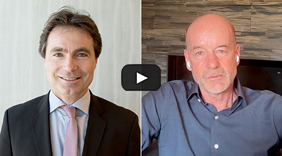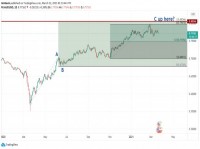|
By Mark Melin "The game has changed since MF Global," said one prominent futures brokerage (IB) executive, speaking on the MF Global episode changing the perception of investor protections in the commodities industry. "As an advisor to professional investors I can no longer say that a direct managed futures account has never failed to protect investors. The issue is how investors protect themselves moving forward." So how does a professional investor ensure their assets are not "Corzined," to use the slang vernacular sweeping the inside of the financial services industry? Informed industry participants suggest five primary steps: 1) Control and monitor the segregated fund investment 2) Know how to identify key financial reports and understand what's important 3) Understand your FCM and work with independent ears to the ground 4) Develop a variety of independent FCM relationships 5) Adopt alternative cash management strategies that provide investor control Control the Margin Deposit The unmentionable topic of "float, that little discussed FCM revenue source that is derived from interest earned on an investor's deposit, is at the center of the MF Global situation. It was interest off customer margin deposits, and the related illegal money transfers out of customer segregated funds, which is at the root of the MF Global scandal. "Now that we live in an environment where FCM risk is questioned, we need be able to assess the risk of an FCM" - Qualitative Capital CTA Justin Shea. Professional investors have always had the ability to apply a certain degree of control to this investment but, unless they knew to ask, they wouldn't receive an offer to this key revenue source. Thus, when investing in a direct managed futures account, the professional investor is advised to prominently include discussions by centering on the degree to which the investor can be given control over segregated funds investments (and receive potential revenue from same). The revenue from "float" is made possible because in managed futures, nothing is "bought" or "sold." The money is held in a transparent segregated account at a Futures Commission Merchant (FCM) used as collateral, a "margin deposit" against future losses. It is this margin deposit that is re-invested, either on behalf of the FCM or the investor. Float investments available to the investor typically are restricted by the FCM and might take the shape of a US Treasury Bond. The investor can typically request that as much as 80% of the margin deposited be collateralized with an investment in such securities. While this investment is not necessarily titled in the name of the investor, by controlling the investment in such a way it makes for losing such an asset in a bankruptcy less likely. (Rule 1.25 of the Commodity Exchange Act limits transfer of securities in a different way than it does a non-pledged asset.) However, even customers who posted margin with Treasury securities titled in their name at MF Global were not fully protected and have received the same pro rata distribution as cash customers. "Just as brokers must abide by Know-Your-Customer rules," says independent trader and futures industry consultant, Bob English, "customers must take it upon themselves to know their broker." "FCM account agreements are not written in stone, and institutional customers routinely direct counsel to edit them to provide greater protection," English said. "Smaller customers who don't have access to sophisticated (and often expensive) lawyers can ask some common sense questions. Does upper management have significant skin in the game, i.e., ownership? Who is the broker looking out for first? A public company might be more incentivized to attempt to please shareholders. Certainly, there are very credible public brokers, but it's something in which to look. In the case of MF Global, Corzine was clearly trying to make the firm into something it was not...a sort of Goldman-lite operation." In addition to controlling the investments, professional investors should receive written descriptions regarding how their margin deposits are handled, particularly with regard to re- hypothecation of customer assets. In addition to understanding such factors, professional investors have the ability to track key aspects of an FCM's financial health. Know Your FCM and Track Their Data "Now that we live in an environment where FCM risk is questioned, we need be able to assess the risk of an FCM," noted Qualitative Capital CTA Justin Shea, who was speaking at the National Introducing Brokers Association. "Essentially we want to know if an FCM is entering dangerous territory-is it going to fail or not?" Shea recommends investors track key data on the FCM financial strength. "With FCM's that are publicly traded, we can check on the stock price and credit rating of the company, as well as robust financial statements issued on a quarterly basis." Publically traded FCMs such as MF Global disclosed key financial details on their SEC 10ks and 10qs, but also make sure to check the brokerage audit report, all of which is available on the SEC's Edgar online database. In the case of MF Global, the brokerage audit report (which was apparently withheld from investors until September 2, 2011) contained details not available anywhere else, including the assignment of all risk in Mr. Corzine's sovereign debt trades to the FCM brokerage and all reward being transferred to London. However, for privately held FCM's, there is much less transparency for quantitatively assessing their risk. As CFTC & NFA regulated entities, FCM's must file a 1-FR report and reveal some financial information on a monthly basis. The CFTC then publishes this report and makes in public about a month later and we can use that data to glean a few insights. [Link to CFTC report: http://www.cftc.gov/ucm/groups/public/@iointermediaries/documents/file/1fr-fcminstructions.pdf] Quantitative Analysis of Publically Available Information A variety of methods to analyze FCM data exist. In Shea's case, he along with other industry participants is building a model designed to help answer the question: is an FCM is experiencing financial difficulty? The model uses CFTC data points such as what a particular FCM's net capital requirement are, how much excess capital over and above those requirements an FCM has, and how much foreign & domestic customer segregated funds and FCM holds. By assessing the historical volatility and rate of change of these categories, as well as the relationships between them, one can use the model to gain insights to how an FCM is running its business and its position in relation to its peer group. FCM. [Link to CFTC Report: http://www.cftc.gov/MarketReports/FinancialDataforFCMs/DescriptionofReportDataFields/index.htm] "We never had doubt about account segregation being a 24 / 7 / 365 responsibility. Understanding our top up on a real time basis is important to ensuring that the 4-D segregated account protections are not violated." - Gary DeWaal, general counsel at Newedge." But even armed with such an understanding of how FCMs operate and especially in the wake of the MF Global crisis, experts advise that you establish multiple clearing relationships to ensure that you have the flexibility you need to seamlessly transfer your funds should the need arise. Develop A Number of FCM Options In opening a direct managed futures account, the professional investor has the option to work with an "Introducing Broker"(IB), which is an independent sales operation that works in concert with the FCM. There are two types of introducing brokers. Independent Introducing Brokers (IIBs) typically have relationships with multiple FCMs, where the investment deposit resides. Guaranteed Introducing Brokers (GIBs) are limited to introduce business to one FCM who guarantees their activities. Independent advisors typically maintain relationships with a variety of FCMs, helping to facilitate the establishment of these clearing arrangements for the investor. However, there's an added benefit to working with an IB- awareness. They typically have their ear to the ground relative to industry activities and common knowledge regarding each firm, theoretically giving them the ability to advise you on issues of operation risk before they become a problem. In fact, Attain Capital shifted their business relationship away from MF Global two and a half years before the firm spiraled into bankruptcy because they noticed a significant change in management philosophy. "Multiple FCM relationships are just an added layer of protection," explains Walter Gallwas, President at introducing broker for managed accounts Attain Capital Management and a veteran of the commodity futures trading industry. "If something comes up - whether it's a dramatic change at the FCM or just a feeling of unease - you can quickly move your funds somewhere that instills greater confidence and comfort." Direct Account Details With Introducing Brokers Mid-sized independent advisors such as Attain typically maintain relationships with a small group of FCMs. They typically have their ear to the ground relative to industry activities and common knowledge regarding each firm. "Working with a variety of FCMs provides a higher degree of flexibility with cash management options," said another futures brokerage (IB) president said. While some clients might be tempted to diversify their deposits across a variety of FCMs, "you lose some margining benefits," he noted, pointing to another FCM cash management technique. While the IB route may suite certain individuals, some professional investors may prefer to work directly with the Futures Commission Merchant brokerage firm. How Leading FCMs Protect Your Assets To close 2011 Newedge was reported as the second largest Futures Commission Merchant in the world, with over $20 billion customer funds alone in the USA. The firm recommends a number of ways to protect assets, but perhaps most interesting are the quantitative levels to which the FCM goes to forecast the needs of what is known as its "top up" or "residual excess capital" required in the segregated account. 4d and Part 30 segregated accounts contain mostly customer capital, but a small reserve of Newedge's own capital, the "top up," is required to cover any unexpected margin deficits or other operational issues that might otherwise adversely impact segregated funds. On each day, Newedge forecasts its expected intra day segregation requirements based on its prior day's experience to enable the FCM to keep sufficient funds properly segregated. "We never had doubt about account segregation being a 24 / 7 / 365 responsibility," said Gary DeWaal, Group General Counsel at Newedge. "Understanding our top up on a real time basis is important to ensuring that the 4d and Part 30 segregated accounts' protections are not violated." DeWaal notes that its forecasts are constantly evaluated subsequently to ensure that the Firm's methodology is valid. This protection is combined with the fact that Newedge does not take intentional directional risk with proprietary trading. While they do engage in intermediation on a principal basis, particularly on the FX side of the house, the models are not designed to speculate on economic outcomes. "We are intermediaries," said DeWaal. "Our goal is to act as an agent and receive compensation on a transactional model. Our capital, the balance sheet, is free of what is known as "directional trading." When considering the security of a balance sheet, Mr. DeWaal noted that in 2008 significant balance sheets didn't help the significant directional exposure of Bear Sterns and Lehman Brothers. Also interesting to note, is that Newedge prefers the single, standard accounting approach rather than the frowned upon "alternative" secured funds accounting methods said by some to be favored by MF Global during the final months of its existence. Although it is still legal, it is said that the two FCMs that had been utilizing the questionable account method have ceased and all FCMs currently use the standard accounting method. Adopt alternative cash management strategies that provide investor control When investing capital in a managed futures program, professional investors are often afforded different cash management opportunities different from that individual investors, and thus have unique options, some of which are not commonly known. Techniques often utilized by professional investors is sweeping all but the absolute margin from the account on a daily basis as well as placing funds or securities on deposit with the FCM in a trust account separate from the segregated account. An example of such money management can be found with a well known spread trader. While the spread trading CTA might have a $2 million stated investment minimum, the actual margin the firm might use on a daily basis might only be $200,000 assuming a 10% margin to equity ratio. In this case, the investor might keep $240,000 in the segregated account, with $40,000 as a margin reserve, while depositing the other $1.76 million in a different account titled in their name. Other variations of this cash management technique include sweeping all excess margin funds (which vary) from the account on a daily basis. Most variations of this cash management tactic are utilized with a master cash account structure. |
|
This article was published in Opalesque Futures Intelligence.
|





 RSS
RSS











